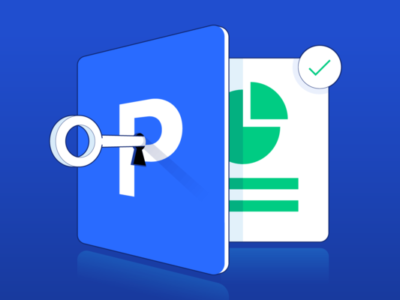
Every brand wants a loyal audience and significantly increases sales with minimal investment and effort. And while this dream used to sound rather unrealistic and naive, as brands use a tool called UGC, it is rapidly becoming a reality.
User-generated content is the content that your audience creates and shares on their social media pages. In this piece, we’ll explain why this tool can be a magic wand for your business and what you need to do to manage user-generated content like a pro.
The most important things about UGC
So, UGC is everything brand-related that your audience puts online: reviews, product photos, before-and-after videos, and more. What is the phenomenon behind UGC’s success when there are photographers and videographers, motion designers, and other specialists dedicated to making top-quality professional content?
The secret is simple: it’s natural. Besides the fact that people are inherently inclined to trust live recommendations, they are also tired of the abundance of professional advertisements they see every day on and off the Internet.
What user-generated content will bring to your business?
Let’s talk about the benefits of user-generated content because they don’t end at sales. Besides bringing in new orders, what else can user-generated content do for you?
- User-generated content increases audience loyalty. With the help of user-generated content, consumers can be involved in brand image building. Subscribers self-assemble into communities that grow organically, with little or no input from you.
- UGC content is effective from an SEO perspective. User-generated content on web pages positively impacts search rankings, increasing reach and engagement.
- User-generated content is a versatile tool. It can be used outside of social media: for example, as part of email marketing, in outdoor advertising, or as website elements. The possibilities of UGC content are endless because wherever you use it, it touches the same strings of your audience’s soul.
- UGC content cuts costs significantly. Running a contest in social networks or using any other method of involving users in content creation will cost a business much less than organizing a full-fledged advertising campaign involving media personalities and large traffic channels.
Types of UGC
What is user-generated content? Roughly speaking, absolutely everything that your customer publishes about you on the Internet falls under this definition: from reviews about hotels, brands, or online stores to comments about help with writing a paper, the past day, or your favorite film. It is customary to divide user-generated content into several large groups, which we will discuss in detail below.
- Reviews
The special value of reviews from the marketing point of view is that they reflect the real and objective experience of using a product. Potential customers see what they can get if they buy a product from you. Another person’s positive experience makes them want to repeat it and experience the same emotions.
Unlike advertising, where a professional model with flawless styling demonstrates an ideal, far from reality, picture of using the product, in reviews, we often see the experiences of ordinary people – this creates a sense of cohesion and solidarity.
- Stories and social media posts
The classic format of user-generated content is to appear in customer stories or posts when a consumer takes a photo or video of your product, tagging the brand on it. The content can be all about the product or contain just a portion of it – if the product is prominently featured in the shot, it’s already considered native UGC content.
The magic of social media allows companies to use customer experience with a product as a promotional tool. People like to share with the world what makes them feel good, and at the same time, they like to buy something on the recommendation of their friends.
- Video Content
Video posts are the next level of user-generated content after photo tags in feeds or stories. A fully edited video, even by an average user of the TikTok app, opens up many opportunities to attract the attention of potential audiences. These can be:
- reviews;
- before-and-after format;
- tips and tricks;
- demonstrations of product usage from start to finish;
- stories of brand interaction;
- comparisons of similar products from several competitors;
- picks of favorites, and much more.
User-generated content in video format always evokes more emotion than photos. And there are so many options to showcase a product with it that UGC brings reach to both the brand and the user who made the video.
- Forum posts
It comes as a surprise to many marketers that the definition of UGC includes not only posts and stories on social networks but also such trivial things as posts on thematic forums. This tool is often underestimated, even though it is incredibly powerful. Anonymous interest forums give users a sense of cohesion and a common group, within which participants’ recommendations are listened to particularly carefully.
Not only are forums a valuable source of user-generated content, but they also allow a brand to learn from its shortcomings. While many consumers are unable or unwilling to communicate negative feedback directly to the company, forums are usually not restrained in their expressions.
- Ambassadorship
This is arguably the top tier of user-generated content. A brand ambassador is the official spokesperson for your company’s mission to your target audience. They are not just the face of the brand with which the advertisement is associated but a guarantor of the quality of the products and the company that represents them. As a rule, ambassadors can use products at a discount, bonuses, or honorarium for their work.
- UGC in email marketing
Not every brand dares to utilize user-generated content beyond social media. And for good reason, as recent studies report that, click-through rates on targeted links from emails can increase by as much as 73% if you use UGC in your newsletters.
Include UGC in personalized newsletters for your customers, and don’t forget to encourage them with relevant discounts and special offers – this will help you collect even more material from consumers.
- Collaborate with nano- and micro-influencers
User-generated content is valuable because it’s content “from people for people.” Your audience appreciates your customers’ non-ideal photos and videos for their naturalness. Therefore, if you use UGC as part of your marketing campaign, it doesn’t make sense to approach medium or large bloggers – it will be the same beautiful but familiar ads to your audience.
Offer to become your “clients” to users with a small number of subscribers (starting from a couple thousand). It is important to choose Influencers among your target audience. For example, you can offer them to test your product and share their opinions on your page. But if you choose this route, be prepared for honest feedback.
- Inclusivity, diversity, and social mission
Today’s consumers are becoming more aware and interested in the principles and values a brand adheres to. They prefer to support brands that actively care about social responsibility, include diverse people in their campaigns, and promote messages of inclusivity.
Socially-oriented campaigns have a better chance of driving audience engagement. When users see their voices and stories being taken into account, they tend to be more active in creating and sharing user-generated content.







